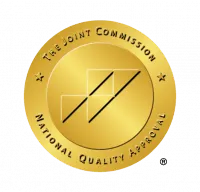Is Alcohol a Gateway Drug?
If you grew up in the 80s or 90s, it’s likely you’ve heard of “gateway drugs.” These are substances that, once used, may lead to harder drug use (as the theory goes).
But how true is this theory in reality? And if gateway drugs are really a “thing,” does alcohol qualify? If you’re raising teenagers, and you catch them drinking, is this a warning sign for further substance use?
Overall, the answer seems to be yes (with some caveats). Many studies show a strong link between alcohol misuse and other addictions, particularly among younger people. Below, we’ll look into why this might be the case, the evidence, and how well the gateway drug theory stands up to scrutiny. Read on to learn whether alcohol truly is a gateway drug.
What Is a Gateway Drug?

Before getting into whether alcohol is, in fact, a “gateway drug,” we should unpack what exactly this term means. Gateway drug theory is the idea that using one substance can lead an individual to use more “serious” drugs in the future. Gateway drugs are often less dangerous and more easily accessible, providing a “stepping stone” of sorts into substance use.
Alcohol, marijuana, and tobacco are all examples of easily accessible substances. Alcohol and tobacco are legal everywhere in the United States, and marijuana is legal for recreational or medical use in the majority of the states in the US. And, in fact, all three have been singled out as potential gateway drugs. But how true is this in reality?
Gateway Drug Statistics
In practice, there is conflicting evidence about “gateway drug theory.” One 2013 study showed a strong link between past alcohol, cigarette, and marijuana use and opioid addiction in younger people. Among respondents currently abusing prescription opioids, 57% showed prior alcohol use, 56% had smoked cigarettes, and 34% had used marijuana.
However, further research casts doubt on whether this connection continues into adulthood, and the 2013 study showed a much weaker link between substances among women than men. And an animal study from 2017 found no connection between prior alcohol consumption and cocaine addiction in rats, questioning the validity of the gateway theory.
Of course, not all evidence from animal studies carries over to humans. But the takeaway is clear: there is enough supporting evidence for gateway drugs to be concerned about it, but the connection is more complex than one might assume. It’s far from a guarantee that drinking alcohol or smoking marijuana will lead to further drug use or addiction.
Alcohol Use Statistics
On its own, alcohol is already the most frequently used and misused substance in the United States. It can be particularly problematic for younger people who engage in binge drinking—a behavior often seen as normal by high school and college-aged people.
In 2021, over 23 percent of people aged 18 and older reported engaging in binge drinking in the past month. In the same survey, 29.5 million people over age 12 had an alcohol use disorder in the past year, including an estimated 894,000 adolescents (ages 12 to 17).
This is especially concerning given that young people who start drinking at an early age are at greater risk of using other dangerous substances. According to the National Institute on Alcohol Abuse and Alcoholism (NIAAA), the younger a person is when they begin drinking, the more likely they are to engage in risky and harmful behaviors. Binge drinking and other drug use also leads to poor educational performance and lower grades in school.
Is Alcohol a Gateway Drug?
So, does alcohol increase drug use? In some cases, drinking may have no impact on a person’s overall substance use. But, overall, there does appear to be a connection. Research shows that people with an alcohol use disorder are 18 times more likely to use prescription drugs for non-medical purposes. At the very least, addiction to alcohol seems linked to addiction to other substances.
In addition, the risk seems especially high for younger people. In a 2012 study, 12th grade students who used alcohol were significantly more likely to use illicit drugs. NIAAA research also shows that young individuals who binge drink frequently are more likely to use other drugs, such as marijuana and cocaine. Although we should take the previous questions about the broader “gateway theory” into account, there does seem to be an argument for alcohol as a gateway drug.
Read more: Alcohol and Other Drugs
How Does Alcohol Act as a Gateway Drug?
When it comes to exactly why alcohol is linked with other types of drug use, the research is not 100 percent clear. But here are some possible explanations for why drinking might lead to broader substance issues, especially for younger drinkers:
Alcohol lowers inhibitions

Drinking alcohol increases levels of norepinephrine, a neurotransmitter that contributes to both arousal and impulsivity. The consequences of this are well-known: many people engage in risky and potentially dangerous behavior when intoxicated. This can apply to substance use as well. A person who is drunk might be willing to try drugs they would never consider when sober.
Drinking can expand your social circle
For young people in particular, drinking alcohol may be part of expanding their social life, or beginning to attend more parties and events. This can be a healthy part of their development in many ways. But these contexts can include others who are making poor decisions around alcohol and substance use. This, in turn, increases a person’s chance of being exposed to other substances in the context of lowered inhibitions.
Consuming alcohol can normalize substance use
Finally, alcohol itself is an intoxicating substance, and is illegal to purchase underage. If an adolescent starts drinking alcohol, and experiences no serious consequences, they may begin to question whether other illegal substances are really so bad. Being intoxicated in certain contexts may also start to feel more normal or socially acceptable, making substance use in general less taboo.
In summary, the more time younger people spend in contexts involving alcohol, the more likely they are to encounter other dangerous drugs. For some, lowered inhibitions, the normalization of substance use, and the influence of other acquaintances could lead to further drug use.
Dangers of Alcohol Use on its Own
All discussion of gateway drugs aside, it’s important to remember that alcohol can be as dangerous as many illegal drugs—whether it leads to further substance use or not.
Approximately 140,000 people in the United States die each year from alcohol-related causes, making it the fourth-leading cause of preventable death in the nation. Research clearly shows that individuals who misuse alcohol have a greater risk of developing liver disease, heart disease, depression, stomach bleeding, and oral cancers.
As far as addiction is concerned, alcohol is certainly on par with many illegal drugs. Those with severe alcohol use disorder (AUD) often find it extremely hard to quit, and withdrawal symptoms can be severe enough to require hospitalization. Nearly 30 million people nationwide qualify as having some form of AUD. So, while it’s worth considering whether alcohol is a gateway drug, remember that excessive drinking is a big enough issue on its own.
Whether you’re concerned that a loved one’s drinking will lead to further substance use, or feel your own drinking has become unhealthy, there are new, more convenient ways to get help. Ria Health offers support for cutting back or quitting alcohol from a smartphone app. Our program includes weekly coaching support, prescription anti-craving medications, and handy digital tools—everything you need to establish a better relationship with alcohol.
Will insurance cover treatment? Verify Coverage
Have Questions? Call (800) 504-5360



